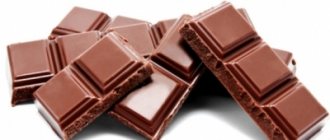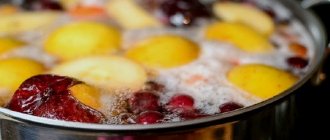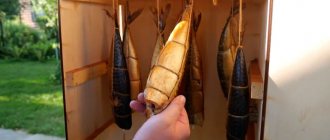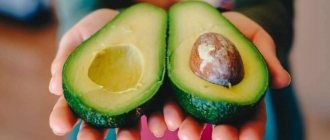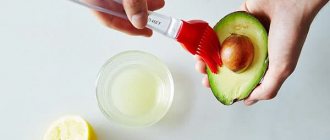Pumpkin is a real storehouse of vitamins and microelements that are necessary for the human body. This vegetable can grow in a wide variety of climate zones. If you care for it correctly, you can count on a good harvest. But it’s not enough to just grow it. It is important to know how to store pumpkin in order to leave all its valuable properties unchanged.
General features of pumpkin
Pumpkin has a round or oval shape. In total, there are 30 varieties of vegetables, which differ in fruit weight, density, taste and ripening time. There may also be differences in the color of the peel, which can be orange, beige, greenish and yellow. What types are distinguished:
- canteens intended for human consumption;
- feed - they are intended for feeding large and small livestock;
- decorative - they are used to decorate original dishes, and they are also a good material for crafts.
Depending on the individual species considered, the weight of the fruit can vary from 2 to 200 kg. This vegetable first appeared in human nutrition 2,500 years ago. South America is considered the birthplace of pumpkins. But today it has successfully spread throughout all CIS countries. She managed to gain large-scale popularity only 400 years ago.
Nowadays the healthy vegetable is used in the preparation of various dishes. In this case, you can use not only the pulp, but also the seeds. Needlewomen make dishes from the peel, as well as various types of crafts. The pulp is suitable for desserts and sauces. You can also make porridge and soups from it. The seeds serve as the basis for the production of natural oil. The beneficial properties of such products are as follows:
- strengthen the immune system due to the content of vitamin C;
- normalize the activity of the central nervous system;
- eliminate heart dysfunction;
- normalize falling asleep and improve sleep;
- have a positive effect on the condition of the epidermis, nails and hair;
- preserve youth and help get rid of excess weight;
- promote normal blood clotting and provide balance in metabolism.
Pumpkin contains a significant amount of iron. However, in order for all these valuable properties to be fully used, storage requirements should be taken into account.
Storing Dried Pumpkin
It is not always possible to freeze pumpkin. In such a situation, you can dry it, put it in sealed jars and store it for several years. Dried pumpkin contains some vitamins and microelements and can be used to prepare various dishes. You can dry it in three ways - in the sun, in the oven and in a dehydrator (electric dryer).
If there are no devices for drying the workpiece, you can use the natural method. The pumpkin is cut into thin slices, no more than 1 cm thick, and placed on baking sheets or stainless steel sheets. Enameled lids from large diameter pots are also suitable. Cover the top of the pumpkin with a layer of gauze to prevent flies from landing. Dry everything for 2-3 days in an open, sunny place. The final stage is aging in the shade for a week, after which the remaining moisture is removed from the pulp.
You can dry the pumpkin in the oven, but here you need to create conditions to remove excess moisture. To do this proceed as follows:
- The pumpkin is cut into slices 0.5-1 cm thick, the skin is completely cut off.
- Place in a sieve or colander, which is then lowered into boiling water for 2-3 seconds.
- Dry the pumpkin, meanwhile preheat the oven to 60 °C.
- Place the slices on baking sheets and put them in the oven, do not close the door completely.
- Keep until ready.
It is best to dry the cut pumpkin in a special device - a vegetable and fruit dryer. Load it in the same way as in the oven, but keep it for a day. During this time, excess moisture from the pulp evaporates, but vitamins and minerals are not destroyed, and therefore this product is the most valuable.
Dried pumpkin is transferred to fabric bags or glass jars with a tight-fitting lid and stored in a dark, dry place. It is important that there are no objects with a strong smell nearby that affect the aroma of the pumpkin.
The product is stored for 1-2 years, depending on conditions, and used for preparing various dishes.
Long term storage
This option is not suitable for all varieties. It is believed that nutmeg pumpkins are the most delicious. However, they can be kept in the pantry for no more than 2 months. If you want to enjoy your favorite vegetable in winter, you should give preference to large-fruited samples. They are quite soft and airy in taste. For winter storage the following varieties should be planted:
- Zhdana;
- Kherson;
- Dacha;
- Juno;
- Hylea.
These varieties also tolerate transportation well. The pulp of most of the presented varieties is sweet and dense.
How can you tell if a pumpkin is bad?
Pumpkins that sit too long become mushy from the bottom up. First, weak spots appear, and soon everything becomes soft and hollow. Throw away the squash if it becomes soft or begins to ooze liquid.
Next, look for moldy and rotten spots. Small ones can be cut out, but if the pumpkin starts to rot, it's time to throw it away.
If you store your pumpkin for more than a month, the seeded part may become very fibrous and rough. It's okay - you'll cut it anyway.
Finally, sometimes when you cut a pumpkin in half, you may find a small area that is dark, hard, and a little dry. You can cut it out with some extra and use the rest of the pumpkin fruit.
Vegetable collection
Fruit ripening is observed in September or in the second ten days of October. The gardener needs to correctly determine whether the crop is ready for harvest. What rules are provided here:
- Collection should only be carried out in clear weather. If the sun does not appear for a long time, there is no need to postpone the process.
- The temperature at night should not fall below zero. If this happens, the fruit may freeze. When frosts form, you should cover the bed with a layer of plastic film overnight.
- If you start collecting in rainy weather, in the future the vegetables will need to be placed in a separate place to dry. The moisture will evaporate in about 2 weeks. In this case, a small distance should be maintained between the fruits.
A sign of maturation can be considered a dull sound when tapping on the bark. The peel itself becomes hard. The stalk also deserves attention. It should be dry. Harvesting that is not ripe is not recommended. In this case, the shelf life will be much shorter. Compliance with all necessary conditions protects the fruit from rot and preserves minerals and vitamins in the pulp.
Before storing, remove the stem using a well-sharpened knife. In this case, it is important to leave a fragment of the tail 5 cm long. The cut must be smooth, otherwise the damaged area will turn into an “entry gate” for bacteria. This will start the rotting process. Large fruits should not be grabbed by the stalk to move from place to place. It may break off.
To select vegetables, specimens that are deformed or injured are set aside. If all the fruits are damaged, the areas with defects should be treated with a solution of brilliant green. At home, they must be kept dry , otherwise they will be attacked by rot. If you pay attention to the appearance and keep the collected specimens dry, they can be preserved until the New Year.
In the freezer
For long-term storage, you can use the freezer. The size of the pieces should be selected taking into account the planned dishes. It is not recommended to cut vegetables after defrosting.
It is permissible to store pumpkin in the freezer for six months or more. At low temperatures, which are less than -18 degrees, the product can be kept for 1 year.
To store raw pumpkin, you need to peel it, remove the core and seeds, cut it into cubes and put it in bags. It is not advisable to put the entire pumpkin in the freezer. It is not recommended to re-freeze the product, so you will have to cook everything.
It is worth considering that when a product is frozen, it expands. Therefore, there must be space left in the bag or container. This will prevent the container from bursting. You can also first freeze the pieces on a board and then transfer them to a bag. The pieces should not touch. This will help prevent them from sticking together.
The product can also be stored blanched. To do this, put the chopped pumpkin in a colander and lower it into boiling water for 3 minutes. Then the vegetable is placed in cold water for 3 minutes. After which it needs to be cooled and dried on a napkin.
Pureed pumpkin requires less space. In this form, it can be frozen for preparations - for example, as a filling for baked goods. To do this, you need to grate the vegetable on a coarse grater. After which the pumpkin is placed in food containers. It can also be stored in plastic cups or ice cube trays.
You can also put baked pumpkin in the freezer. To do this, you need to peel it inside, but leave the peel on. Then the vegetable should be cut into large pieces and placed on a baking sheet. It should be placed skin side down. Bake the product at 200 degrees for 1 hour.
You can store baked pumpkin in pieces. To do this, the peel must be cut off. It can also be placed in the freezer in puree form. To do this, the pulp is crushed using a blender until a homogeneous texture is obtained.
Temperature Requirements
It is necessary to determine the storage temperature in winter so that the vegetable can be preserved for as long as possible. The optimal ranges are from +5 to +15 degrees. This mode helps preserve the juiciness of the pulp. If it is possible to maintain a level not lower than the specified indicators, the pumpkin will be suitable for consumption until spring.
Pumpkin can be stored at home in the freezer. In addition to temperature, the availability of fresh air and humidity are important. The latter should be at a level of no more than 70%. This eliminates the possibility of mold formation. But it should also not fall below 60% so that the structure of the vegetable does not become too dry.
Preliminary preparation and storage conditions
Vegetables should be harvested from the beds only after they are fully ripe. It is impossible to keep the pumpkin until it freezes, because frozen fruits will quickly rot at home. A late-ripening vegetable with a strong crust without visible damage is ideal for storage.
Advice. It is recommended to pick pumpkins on a sunny day. The fruit is separated from the vines with a knife, leaving the stalk behind (without it, the pumpkin will begin to rot).
To ensure that the pumpkin lasts throughout the winter, it is left under a canopy in the sun for a week, allowing the skin to harden and dry.
Damaged fruits (with dents, scratches, traces of rot) are set aside for short-term storage and consumption first. The rest are transferred to a prepared place - a dry and cool room with a storage temperature of 10°C (but not lower than 1°C) and a humidity of 60–70%.
To successfully store vegetables, three important conditions must be met:
- maintain a stable temperature;
- Avoid exposure to direct sunlight;
- Avoid contact of vegetables with each other.
Cut, peeled pumpkin should only be stored in the refrigerator. Pieces wrapped in film or foil will last from two weeks to a month. Frozen slices will keep for up to a year. Outside of the freezer, sliced pumpkin will last 2-3 days.
Accommodation in an apartment
Once the harvest is harvested, the question arises of choosing a place for further storage. When it comes to a private house with a basement, there is no problem as such. If it is not there, you will have to organize a special place to place rather large fruits. According to reviews from lovers of this vegetable, it is perfectly preserved on the balcony or loggia.
It should be laid out on shelves covered with fabric or cardboard. The balcony should be glazed, but it is also important that fresh air flows in here. Fungal infections, dampness, and the prospect of freezing are unacceptable. Pumpkin likes shade , so it is better to cover the shelves with thick fabric or hang curtains.
Despite the need to maintain some distance, it happens that there are a lot of fruits, but the area is limited. In this case, you can separate them from each other with paper.
Pumpkin preparations for the winter
How to store a pumpkin for the winter if you don’t have a garage, an insulated balcony, and there’s not enough space in the freezer? In this case, home canning comes to the rescue. There are many recipes for preparing healthy fruits, here are the most popular ones.
Canned pumpkin
For 1 jar of 500 ml you will need:
- 300 g pumpkin;
- 20 ml vinegar;
- 3 pcs. black peppercorns, cloves;
- Bay leaf;
- for brine - 1 liter of water, 20 g of sugar, salt.
Preparation:
- the ripened vegetable is cut into 2 equal parts, seeds and peel are removed;
- the pulp is cut into equal cubes, immersed in boiling water for two minutes, then in cold water;
- prepare the brine;
- prepared vegetable cubes and spices are placed in a sterilized jar;
- pour boiling brine and cover with a lid.
How long can canned pumpkin last? The shelf life of the product is at least one year. Until the next harvest, the contents of the jar do not lose their consumer properties.
Stowing in the refrigerator
If incomplete processing has been carried out, the pumpkin can be placed in the refrigerator. The same goes for winter stocks that have been damaged after pruning. It is not advisable to send whole fruits here. Areas that are not covered by the peel should be wrapped with foil or film. This way you can keep the pumpkin for up to 2 weeks. This period can be increased to a month if we are talking about a modern refrigerator model equipped with an antibacterial system.
To prevent moisture from evaporating from the cut surface, you should lubricate the surface layer with a small amount of sunflower oil. You should take one that has no smell. The layer should be thin, so it is better to use a pastry brush for this manipulation.
How to choose a pumpkin
Choose pumpkins that are firm to the touch and feel heavy for their size.
Make sure the rod is still attached and that it is firm. A soft or rubbery stem means that the pumpkin has already started (or will soon begin) to lose liquid and become soft, and this will definitely not last for those two to three months that I mentioned.
Then avoid impacts, abrasions and any visible damage to the skin. Pumpkins may appear tough on the outside, but they are easily damaged if the skin is pierced. When this happens, the pumpkin will rot from the inside, and you won't know about it until a month later. After you cut it.
However, the peel does not have to be perfectly beautiful. Harder, rougher to the touch and slightly dry areas are suitable. In 98 cases out of 100, the pulp inside will be fine.
The freezer is the best place
You can store cut pumpkin at home in the refrigerator or freezer. The second is rightfully considered the best place to store pumpkins. To prepare a dish using it, you just need to take out the pieces. To freeze a vegetable, you need to cut it into small pieces and then place them in containers or freezer bags. Some people advise saving it entirely.
You can cut it in half, then use one half, wrap the other half in cling film and put it in the freezer. Here it can be stored for quite a long time. You can mix the slices with other vegetables and fruits if you plan to use them to prepare a stew.
Is it possible to store peeled pumpkin?
It is not worth betting that a raw vegetable with a scratched or cut shell will not rot in the heat. After 40-45 hours, the fruit will begin to decompose and become moldy. A cool, dry place is another matter.
In the depths of a basement or refrigerator, for example, a peeled or cut pumpkin will last much longer than in an apartment at a temperature of 25 degrees. In the freezer - even more so.
The best way to store pumpkins is, of course, a basement or cellar. We described this method in detail in this material.
Among other things, the opened vegetable crop can be dried, preserved in the form of compote, juice or jam. By the way, the sweetest fruits are of the nutmeg variety. They can also be eaten raw.
Drying slices
When thinking about where to store pumpkin at home, you should choose dry rooms with enough space. When there is no place to store fresh fruits, drying technology comes to the rescue. For this purpose, the pumpkin is cut into pieces no more than a centimeter thick. After this, they clean it of seeds and wash it with hot, slightly sweetened water. Next, the pieces are dried and placed in a preheated oven or electric dryer at a temperature of 50-60 degrees.
The pumpkin will have to stay in the oven for up to 6 hours. The time for drying the pumpkin in the dryer depends on the specific model. The temperature must remain constant. You should not exceed it, as in this case the pulp will be baked and not dry.
Modern models of electric ovens provide low-temperature modes. This is an excellent option for drying vegetables. You can put pieces of fruit in the chamber and not worry about their condition.
After the slices are dried, they are wrapped in a layer of thick paper or parchment. Next they are placed in a dry and dark place. If there is no suitable space to place them, you can resort to conservation technology. Pumpkin makes excellent candied fruits, purees and juices. The seeds can be collected, washed under running water and dried. This is an independent delicacy; they are also suitable for decorating pies and salads. This product is very useful for women and men.
What to remember
To store pumpkin for a long time, you must follow the following rules:
Choose a pumpkin for storage without damage and with a good strong tail. Photo: gazeta19.ru
- Store in a dry and cool place. The pumpkin is well preserved whole if it is stored in the pantry of an ordinary apartment, away from radiators. It should be wrapped in paper or cloth to prevent moisture from escaping.
- Store frozen. Freezing pumpkin is the most affordable way to preserve vegetables. The pieces should be placed in portioned bags so as not to defrost large portions. Repeated freezing is destructive.
- Dry with thin plastics. The slices will dry better and faster if they are cut into thin layers.
- Store in glass or ceramic containers. Dried vegetables are best preserved in glass or ceramic jars with well-pressed lids.
In the basement and cellar
If the basement does not freeze, even when it is frosty outside, it is well suited for storing crops. It's important to keep it dry. At the same time, it is necessary to have the possibility of ventilation. Pumpkin is well preserved in the cellar. This method works well even for beginners. True, shelving will have to be built here. The shelves themselves must be dry. They are covered with high-quality straw.
The fruits are placed upside down at a short distance from each other. From time to time they are turned, inspect the straw, and find out if there are pests or mold. If any traces of damage are detected, it is not recommended to store such a crop any further. It should be reworked. If the pumpkin remains intact, but some fragments had to be cut off from the peel, it is enough to treat them with a disinfectant compound or seal them with a bactericidal plaster. After this, you should take them into the house. The vegetable will remain edible for up to 7 days at room temperature.
When to collect and how to prepare pumpkin for storage at home
Mid-season and late-ripening varieties with thick skins are characterized by increased shelf life:
- Mozoleevskaya;
- Ioannina;
- Almond;
- Kherson;
- Gribovskaya winter;
- Slavuta.
Sweet varieties with a thin crust spoil much faster. The ripened fruits are harvested in dry weather before the first frost, when the leaves have withered but not yet turned yellow, and the “tail” has changed color from green to gray.
Important! A ripe vegetable is characterized by a bright color, a woody stalk, and a hard peel with a pattern characteristic of the variety.
To preserve the fruit until spring, the stalk is cut not at the very base, but at a distance of 5–6 cm.
Pumpkin can ripen indoors after being removed from the garden, but long-term storage is not guaranteed, since there is a high probability of rotting. It is better to put unripe fruits into processing and preservation.
The harvest is dried in the sun for several days. Then each specimen is wiped with a dry cloth, removing any remaining soil and dirt. Do not use a damp cloth to leave the natural protective layer on the peel intact. Pumpkins can be stored for a long time without dark, wet spots, dents, cracks, or mold. For minor damage, the skin is treated with manganese diluted in water, a one percent solution of Bacillus subtilis, or the fungicide Fitosporin. Soapy water also creates a protective shell.
Cut pieces
Pumpkin is not always fully used. If the fruit has not been cleared of seeds and is planned to be stored in a large piece, the cut area must be covered with film and then the vegetable must be placed in the refrigerator. It will remain in this state for up to 3 weeks. If you plan to prepare something from it after the specified period, the top layer of pulp must be removed.
When the fruit is peeled and cut into pieces, completely different rules apply. Take a pastry brush and grease the slices with vegetable oil, wrap each individually in foil or film. If you select the first material and change it periodically, you can save the product for up to a month. It is not recommended to keep the vegetable in the refrigerator for longer than this period. It's better to freeze it.
Terms and basic methods of storing pumpkin
The quality of the product largely depends on the location and packaging. How to properly store fresh pumpkin so that it does not spoil until spring? For this purpose, use a cellar, basement, balcony, freezer. You can keep the fruits in your apartment or refrigerator, but in this case the shelf life of the vitamin pumpkin will be shortened.
Cellar or basement
Up to eight months, the quality and taste of the product is not lost if preliminary preparation has been carried out and the pumpkin is stored in the cellar according to all the rules:
- preparation begins with getting rid of the remnants of last year's vegetable harvest;
- the room is dried and disinfected by whitening the shelves and walls with lime;
- vegetables are laid out on racks, since the temperature is higher there and air circulates better;
- straw and dry paper are laid under the fruits;
- pumpkins placed on shelves with their stems facing up should not touch each other or the back wall;
- vegetables are placed at a distance of at least 10 cm from each other;
- Straw is laid between adjacent specimens.
Note! To prevent one rotten fruit from ruining the entire harvest, the cellar is periodically checked for condensation.
If necessary, ventilate the room and place a bucket of quicklime near the rack. Droplets of water from the peel are wiped with a dry rag, vegetables with dark wet spots are removed and sent for processing.
Room
Residents of apartment buildings that do not have cellars or insulated balconies have to store pumpkins in a room or dark pantry, laying parchment and straw on the floor. You can store the fruits in one row with the “tails” up under the bed or in the coolest place - under the window. To comply with storage conditions, periodically turn on the humidifier and do not forget about daily ventilation. If the temperature in the apartment is above 22 °C, the vegetable is used for its intended purpose within 60 days.
Balcony
On an insulated, ventilated loggia, fruits can be stored until spring, if you take into account some nuances. Requires protection from light (natural dark fabric) and lime-washed shelves covered with thick paper. If the temperature on the balcony drops below the critical level of +3°C, each vegetable is wrapped in a cotton blanket.
Fridge
In the refrigerator, the whole fruit takes up a lot of space or does not fit at all. How to store cut pumpkin in the refrigerator to extend the shelf life of the product?
After cutting the vegetable, remove the core and seeds. The peel is left so that the product remains juicy.
Slices wrapped in cling film do not spoil for 2 weeks. Pieces in thick foil remain fresh for up to one month if the packaging is changed periodically. Before each replacement, the product foil is lubricated with vegetable oil to protect it from weathering.
We recommend:
How to preserve cut peonies in a vase at home
Freezer
To prepare puree, steamed vegetables or baby food, the pumpkin can be cut into large slices before putting it in the freezer. It is not necessary to remove the peel.
For soups and fillings, cubes or bars are used. But in this case, the vegetable must first be cleaned of bark and seeds.
The third grinding option is to shred the pulp using a grater. This product is added to the dough.
Freezing technology depending on the cutting option:
- large slices are wrapped separately in cling film and sent to the freezer;
- pieces and sticks are laid out in one row on a cutting board, cooled until hardened, and transferred to a bag;
- Before placing the chopped vegetable in the freezer, squeeze it out, pack it into bags, and remove the air.
You can freeze baked or boiled fruit at room temperature in a container.
Important! To defrost, place the package with pumpkin on the refrigerator shelf for 8–10 hours. Before cooking, drain the water.
How long frozen pumpkin can be stored depends on the condition of the fruit when planted. Raw pulp does not lose its taste for up to 9–10 months, boiled pulp for 4 months. It is not recommended to freeze prepared vegetables, cut into pieces, or in the form of puree in large quantities.
Common mistakes
The most common mistake is harvesting an unripe crop. Such fruits last much less time and begin to rot quickly. Gardeners often water crops when they shouldn’t. It is necessary to stop the flow of liquid 10 days before the intended cleaning.
After the vegetables are collected, they should be placed in a warm and dry place to dry. Some summer residents immediately put them in the cellar, which is why they are attacked by mold. The crop should always be placed on something soft and dry. If you choose concrete for this, rot will occur. Dry sawdust or straw are best suited for this.
It is important to sort by size. Large specimens should be placed next to equally large specimens. The best ones should not be stored at all, but sent immediately for conservation. In addition to the brilliant green solution, cracks and scratches should be treated with 100% potassium permanganate. It is not recommended to be near apples and pears during storage. These fruits emit ethylene, which helps reduce shelf life.
If you follow simple storage rules, this healthy and tasty product will be available for use throughout the winter. There are many interesting recipes with pumpkin pulp. The thick peel can be used for applications and crafts, and the seeds can be dried and consumed just like that.
How do you like the article?
If the pumpkin is not ripe. When to Harvest a Pumpkin
You can, of course, leave it until... But personally, I think it’s much better to eat than to cut heads out of it and scare passers-by))). Therefore, it is better to remove this vegetable from the garden on time. But when, tell me, will this “just in time” come?
Pumpkins from the garden need to be harvested on time. The correct time for harvesting can be determined by two parameters:
- By timing;
- By the appearance of the plant.
First, let's talk about timing. Suppose we planted a pumpkin in the second half of May (optimal for the middle zone).
pumpkin ripening time
The first thing that should be said is that there are early-ripening, mid-ripening and late-ripening varieties of pumpkins. Based on this, the cleaning time should be determined.
- Early ripening varieties include such varieties as 'Golosemyannaya', 'Mozoleevskaya 49', 'Almond 35', 'Vesnushka', 'Biryuchekutskaya 27', 'Gribovskaya Kustovaya', 'Jack O'Lantern' ('Jack o Lantern') and ' Table King' ('Table King'). Harvesting of these varieties usually begins in mid to late August. They are tender, the shell is thin. They ripen quickly and are not stored longer than 1 month. The ripening period is 92-104 days. 3.5 months, roughly speaking.
Based on the pumpkin variety, the harvesting time should be determined.
- Mid-season pumpkin varieties include such pumpkin varieties as 'Winter Sweet', 'Smile', 'Kroshka', 'Stofuntovaya', 'Volzhskaya Gray', 'Medicinal', 'Rossiyanka', 'Winter Dining Room A-5', 'Pink Banana' ('Pink Banana'), 'Blue Hubbard' ('Blue Hubbard'). These varieties are suitable for longer storage. Harvesting begins in mid-September, but before frost. If the pumpkin gets frozen, it will affect its shelf life and it will quickly spoil. Thus, the ripening period for mid-season pumpkin varieties is on average 110-120 days. That is 4 months.
The ripening period for mid-season pumpkin varieties is on average 110-120 days
- Late-ripening pumpkins (also known as hard-bark pumpkins) are represented by the varieties 'Pearl', 'Muscatnaya', 'Vita', 'Intercept', 'Testi Delipe', 'Butternut Ponka', 'Vitaminnaya'. Basically, these are muscat varieties, brightly colored, aromatic, with a thick shell and tasty pulp. This pumpkin can be stored for up to six months! Harvesting of late-ripening pumpkins should begin in mid-late September. However, often its ripening period is not 120-140 days, but about 200. So what should we do then? Removing unripe pumpkin? Absolutely right! It will ripen well during storage - in 20-60 days it will reach the peak of its ripeness. The pulp will become brighter and so tasty that you can even eat it raw.
Harvesting of late-ripening pumpkins should begin in mid-to-late September. Naturally, the climate makes its own adjustments to the proposed recommendations. So, in the south, pumpkins are usually kept in the garden for a very long time - until all the foliage dries out. Frosts come late there, so there is no threat. You can look for seeds of a suitable variety in our market, section Pumpkin seeds. Now let's talk about the appearance of our pumpkin. How do you know when it’s time to pick a berry?
external signs of pumpkin ripeness
as you already understood, the pumpkin does not have to be ripe at the time of harvesting. and yet there are certain external signs that make it possible to determine that the time for harvesting has come. Experienced gardeners may have known this for a long time already, but beginners don’t even ask such questions!))
External signs of pumpkin ripeness A pumpkin ready for harvest looks like this:
- The peduncle is woody. That is, not juicy and green, but dried out and very hard.
- The leaves have turned yellow, faded or even dried out (at least some of them).
- The color of the pumpkin itself became brighter and more saturated. Depending on the variety, it can be dark orange, yellow or gray-green. We had a pumpkin like this last year: the outside is gray-green speckled, and the inside is orange. In general, colors and shapes come in very, very different shapes.
- The pumpkin shell has become denser than before.
These are the main signs of a ripe pumpkin. I think, based on the timing and external signs, you can never go wrong... The timing is written on the packages of seeds, so it’s not difficult to navigate.
The dates for pumpkin ripening are written on packages with seeds. By the way, when harvesting, you need to cut off the stalk so that 3-4 cm remains. And, of course, do not damage the shell, otherwise the pumpkin will not be stored.
- Pumpkin: planting and care
- Pumpkin pulp is my variety selection parameter
- How to store pumpkin?

